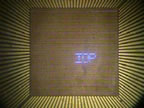 Photonic materials, devices and techniques have major global commercial significance, spawning technologies that underpin many economic sectors from aerospace, automotive and communications to consumer products and healthcare, and SUPA will actively promote research and knowledge transfer supporting such technologies. The development of novel and high
Photonic materials, devices and techniques have major global commercial significance, spawning technologies that underpin many economic sectors from aerospace, automotive and communications to consumer products and healthcare, and SUPA will actively promote research and knowledge transfer supporting such technologies. The development of novel and high  quality materials is essential for advances in many areas of photonics. Currently there exist world class activities in photonic material fabrication, characterisation and spectroscopy across a number of the partner universities. These are broad-based, with growth, basic materials physics and device fabrication capabilities in light-emitting polymers and dendrimers at St Andrews, III-V semiconductors and notably GaN at Strathclyde, II-VI materials and quantum dots at Heriot-Watt and colloidal materials in Edinburgh.
quality materials is essential for advances in many areas of photonics. Currently there exist world class activities in photonic material fabrication, characterisation and spectroscopy across a number of the partner universities. These are broad-based, with growth, basic materials physics and device fabrication capabilities in light-emitting polymers and dendrimers at St Andrews, III-V semiconductors and notably GaN at Strathclyde, II-VI materials and quantum dots at Heriot-Watt and colloidal materials in Edinburgh.
 Within SUPA we are building closer synergetic links between these complementary facilities and photonics device physicists to develop new, highly engineered photonic materials and nano- and micro- structures, including for example, hybrid organic-inorganic semiconductor materials and devices and innovative photonic crystals. Novel sources, e.g. compact and tunable ultrafast lasers, sensors and detectors based on such materials, feed into the other SUPA priority areas, particularly biophotonics, quantum information processing and photonic sensing.
Within SUPA we are building closer synergetic links between these complementary facilities and photonics device physicists to develop new, highly engineered photonic materials and nano- and micro- structures, including for example, hybrid organic-inorganic semiconductor materials and devices and innovative photonic crystals. Novel sources, e.g. compact and tunable ultrafast lasers, sensors and detectors based on such materials, feed into the other SUPA priority areas, particularly biophotonics, quantum information processing and photonic sensing.
 Opportunities exist for new research and exploitation of nano/micro-photonics, the management of photons by structures operating at the interface between the macroscopic and the microscopic world, for example new structures for sensing and measurement with micro- and nano- scale resolution, e.g. photonic bandgap fibres or nanotubes. As photonic sources, novel micron-sized diode arrays, quantum dots and high-power surface-emitting lasers will find significant applications, for example in bio-sciences and microengineering.
Opportunities exist for new research and exploitation of nano/micro-photonics, the management of photons by structures operating at the interface between the macroscopic and the microscopic world, for example new structures for sensing and measurement with micro- and nano- scale resolution, e.g. photonic bandgap fibres or nanotubes. As photonic sources, novel micron-sized diode arrays, quantum dots and high-power surface-emitting lasers will find significant applications, for example in bio-sciences and microengineering.